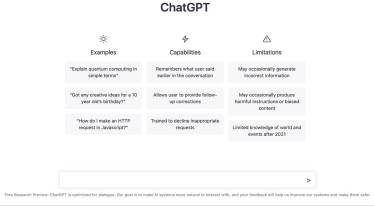| Interview | ChatGPT has to be developed further for HR to use it: Teamlease HRtech CEO
ChatGPT has taken the world by storm, with 100 million monthly active users just two months after launch. But what applications will the AI chatbot have in the human resources field? Will it replace the human touch and result in job losses? What does the future of HR tech look like? Sumit Sabharwal, CEO, TeamLease HRtech, spoke to Sudhir Chowdhary on whether the new tool will be a game-changer in the HR space. Excerpts:
How can ChatGPT be useful in HR tech?
ChatGPT has a variety of applications. For instance, answering questions from employees during training, developing L&D materials, adjusting HR’s automated outreach to prospects, and many other things. The tool would need to be extremely accurate in order for all of these use cases to be feasible. Ongoing research is being done on its accuracy. The tool must, therefore, develop before we can use it.
With technologies like ChatGPT, what does the future of HR tech look like?
ChatGPT is a product that uses generative AI. The technology can be used to create new content, such as text, photographs, audio files, movies, and more types as suggested by the name. Therefore, it may be utilised in HR tech to satisfy content requirements such as sending emails, creating learning and development programmes, publishing job vacancies, resolving employee issues in a proactive manner, etc.
What other technologies are available in the HR space, and what could be expected in the coming years?
The future of HR technology is bright for artificial intelligence. It can be used in a variety of ways to streamline HR managers’ tasks. For instance, current applicant tracking systems employ AI to categorise, evaluate and choose the best applications during the earliest phases of hiring. Similar to this, AI-enabled HR software tools can assist candidates during the onboarding process, arrange their interviews, and respond to their questions without any manual intervention.
In the future, AI will be used in a wide range of HR processes, including compliance, performance management, training & development, and employee engagement.
What are the benefits as well as drawbacks of technology in the HR sector?
According to a recent study, HR technology improves administrative effectiveness by up to 21%, saves time and money by up to 30%, and reduces errors and duplication by up to 65%. In other words, HR technology benefits a company in many ways.
Regarding the drawbacks, we can remark that HR technology is still not at the point of intuitiveness where HR professionals can fully utilise it without any outside assistance. As a result, when new HR tech is implemented in the company, they might require an introduction demo or a brief training session. However, HR technology is quickly developing to become ever more user-friendly.
